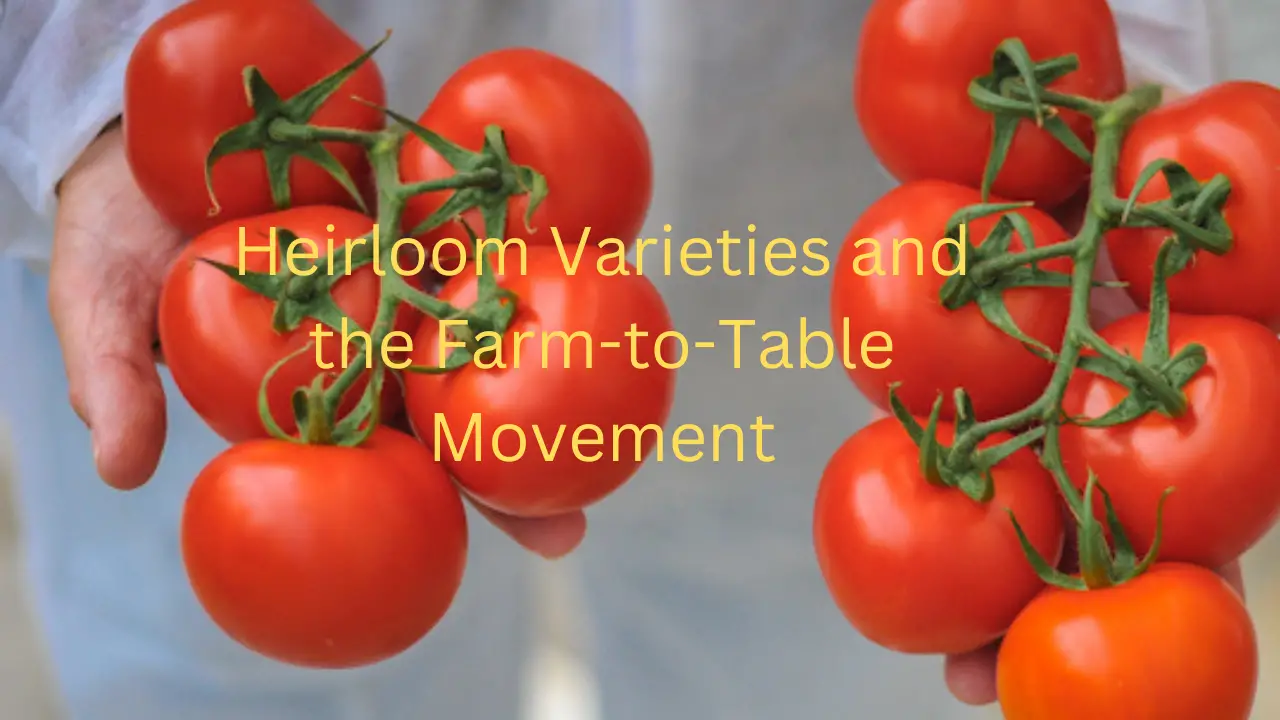
Yankee Candle Pink Sands Scented, Classic 22oz Large Jar Single Wick Candle, Over 110 Hours of Burn Time, Classic Large Jar, Pink
51% OffHeirloom Varieties and the Farm-to-Table Movement
In recent years, the culinary world has witnessed a resurgence of interest in heirloom varieties of fruits, vegetables, and other produce. This revival is closely tied to the Farm-to-Table movement, which emphasizes the use of locally sourced, fresh ingredients in restaurant and home cooking. In this article, we will explore the fascinating world of heirloom varieties and their significant role in the Farm-to-Table movement. From their historical significance to their impact on sustainability and flavor, we will delve deep into the roots of these unique crops.
Understanding Heirloom Varieties
Heirloom Varieties: A Trip Down Memory Lane
Before we dive into the Farm-to-Table movement, let’s understand what heirloom varieties are. Heirloom varieties refer to old, open-pollinated cultivars of plants that have been passed down through generations. These are not your typical mass-produced crops; instead, they carry a rich history and a unique genetic heritage.
What Sets Heirlooms Apart?
Heirloom varieties are distinct in several ways. They are typically bred for flavor, rather than uniformity and shelf-life, which is the norm for modern hybrids. These crops often come in a dazzling array of colors, shapes, and sizes, adding a vibrant touch to any plate.
The Farm-to-Table Movement
Bringing the Farm to Your Plate
The Farm-to-Table movement is all about creating a direct connection between farmers and consumers. It emphasizes the importance of using locally grown, seasonal ingredients in cooking. This movement has gained momentum as people seek healthier, sustainable, and tastier food options.
Sustainability on Your Plate
One of the primary goals of the Farm-to-Table movement is promoting sustainability. By reducing the distance food travels from farm to plate, it minimizes the carbon footprint associated with transportation. Additionally, it supports small-scale local farmers, fostering agricultural diversity.
The Marriage of Heirlooms and Farm-to-Table
Heirlooms in Farm-to-Table Restaurants
Farm-to-Table restaurants have embraced heirloom varieties with open arms. Chefs appreciate the unique flavors and characteristics of these crops, using them to create exquisite dishes that tell a story of tradition and locality.
Home Cooking with Heirlooms
It’s not just restaurants that are in on the action; home cooks are also incorporating heirloom varieties into their recipes. From colorful heirloom tomatoes in salads to heirloom beans in stews, these ingredients bring a burst of flavor to every meal.
The Flavorful Impact
Rediscovering Forgotten Tastes
Heirloom varieties often surprise consumers with their incredible flavors. These crops have preserved the authentic tastes of the past, allowing us to rediscover forgotten culinary pleasures.
Enhancing Culinary Creativity
Chefs and home cooks alike find heirloom varieties inspiring. Their unique characteristics and flavors encourage culinary creativity, resulting in dishes that stand out from the ordinary.
Sustainability and Biodiversity
Preserving Genetic Diversity
Heirloom varieties play a vital role in preserving genetic diversity in crops. By growing these old cultivars, we help maintain a rich genetic pool that can be tapped into for future agricultural challenges.
Reducing Food Waste
Farm-to-Table practices often lead to reduced food waste. When you buy locally and seasonally, you are less likely to throw away spoiled produce that has traveled long distances.
Conclusion
In conclusion, heirloom varieties and the Farm-to-Table movement share a harmonious relationship built on flavor, sustainability, and heritage. As we continue to explore and appreciate the unique qualities of heirloom crops, we contribute to a more sustainable and flavorful culinary world.
1. Are heirloom varieties only about tomatoes?
No, heirloom varieties encompass a wide range of crops, including beans, peppers, squash, and more. Each has its unique story and flavors.
2. Can I grow heirloom varieties in my backyard garden?
Absolutely! Many heirloom seeds are readily available for home gardeners, allowing you to enjoy these unique crops at home.
3. How can I find Farm-to-Table restaurants in my area?
You can use online resources and apps to locate Farm-to-Table restaurants near you. Many establishments proudly advertise their commitment to local sourcing.
4. Do heirloom varieties require special care when growing them?
While they may have specific needs, heirloom varieties are generally not more challenging to grow than modern hybrids. Research and follow the guidelines for each specific crop.
5. What’s the best way to support the Farm-to-Table movement?
You can support the movement by choosing locally sourced products, visiting farmers’ markets, and dining at Farm-to-Table restaurants. Your choices can make a significant impact on









